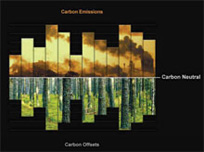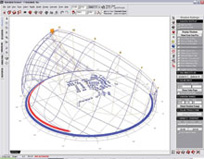Elma Durmisevic
Michael McDonough
Ton Venhoeven
Ahmet Hadrovic
Michael Braungart
Marcel Vroom
Wim Poelman
Rudi Daelmans
Martin Smit
Nirvana Pistoljevic
Natasa Perkovic
Sanja Durmisevic
Miriam Losse
Jan Brouwer
Martin Wollensak
Thomas Bednar
Maarten Dansen
Jaap Wiedenhoff
Adnan Pasic
Ivan Straus
Job Roos
Boran Pikula
Dzenana Bijedic
Haris Hadzialic
Ejub Dzaferovic
Almedina Hadzic
Alisa Grabus
Sanela Klaric
Azra Korjenic
Ken Yeang
Dushko Bogunovich
Michael McDonough
Ton Venhoeven
Ahmet Hadrovic
Michael Braungart
Marcel Vroom
Wim Poelman
Rudi Daelmans
Martin Smit
Nirvana Pistoljevic
Natasa Perkovic
Sanja Durmisevic
Miriam Losse
Jan Brouwer
Martin Wollensak
Thomas Bednar
Maarten Dansen
Jaap Wiedenhoff
Adnan Pasic
Ivan Straus
Job Roos
Boran Pikula
Dzenana Bijedic
Haris Hadzialic
Ejub Dzaferovic
Almedina Hadzic
Alisa Grabus
Sanela Klaric
Azra Korjenic
Ken Yeang
Dushko Bogunovich

Lecture:
Green design The challenge
18:15h
Day One, Tuesday 09 September
Collegium Artisticum, Sarajevo
ELMA DURMIŠEVIĆ
Elma Durmišević founder of Sarajevo Green Design Festival is a head of the 4D Architects office in Amsterdam and president of NAUK (Academic club for Science, Art and Culture-B&H) . As Research/Project leader and Master coordinator at the University of Twente she initiated new research and development projects for green buildings and systems with the construction industry. Durmisevic is initiator of Centre for Green Transformable Buildings at the University of Twente and development of experimental green building lab on the campus of the University. Durmisevic is advisor and inspiration of multidisciplinary working group within Innovation Platform and develops together with the industry innovative flexible building systems that can be reconfigured and whose materials can be reused. Durmisevic studied architecture at the University of Sarajevo. Here interest in nature of building and it’s impact on social, environmental and economic systems resulted in a PhD theses ( TU Delft 2006) Transformable Building Structures, advocating Design for Disassembly as a way to introduce green engineering into building design and construction.
Her vision is one in which homes become extensively transformable, and disassembly and reconfiguration is possible at all construction levels, spatial as well as material.
Durmisevic indicates that dynamic changes in use of buildings coupled with growing environmental issues will require fundamentally different way of building design in the future. Her design portfolio includes urban planning, multifunctional buildings and sports facilities, offices, villas and flexible and energy saving building systems.
Her vision is one in which homes become extensively transformable, and disassembly and reconfiguration is possible at all construction levels, spatial as well as material.
Durmisevic indicates that dynamic changes in use of buildings coupled with growing environmental issues will require fundamentally different way of building design in the future. Her design portfolio includes urban planning, multifunctional buildings and sports facilities, offices, villas and flexible and energy saving building systems.
Here workshops with students evolved into ongoing International Design Studios for development of multifunctional and transformable buildings with University of Delft and later on with Universities Twente, Sarajevo and Yldiz.
Durmisevic is author and editor of number of books, scientific papers and articles, and invited speaker on series of public lectures, international conferences and universities.
Links:
www.nauk.nl
www.4darchitects.nl
www.ctw.utwente.nl
Green Design Overview
The exponential increase in population and contemporaneous increase in standard of living for many, will mean that the demand for essential goods & services (transportation, cars, planes, but also housing, materials, water, food) will increase by at least a factor 2 in the next few decades. If the need to support an additional 3 billion people and effect of increase per capita consumption is added it is clear that the linear material flow (from excavation to disposal) present in the existing industrial systems is not sustainable. Many scientists speculate that if 9 billion people have a western life style in 2050 we would need 6 Earth’s to provide the necessary resources to sustain a population. A point has been reached when search for sustainable solutions for the resource feedback loops has become unavoidable.
At the times of global climate crises and when natural materials supplies are gradually depleting and becoming increasingly expensive the durability of buildings and products is becoming a major issue. Issues as adaptability, reconfigurability, reuse and recycling will be critical to the building and product value in the future.
Some have suggested that industrial systems could use the metaphor and behavior of biological systems as guidance for sustainable design.
In an ideal case one can adopt as a goal that every molecule that enters a specific manufacturing process should leave as part of a saleable products; that the materials and components in every product should be used to create other useful products at the end of product life; (Greadel and Allenby), and that the main structure of every building can accommodate different use patterns during its total life.
The aim of green design is to close the loop of industrial processes and bring material and energy back into a industrial cycle while eliminating the concept of waste. Unlike car and product design where concept of industrial ecology (closed life cycle of products) has been investigated and applied in the past, this approach is revolutionary when it comes to the building design.
Considering the fact that the modern economic systems relay on ever increasing consumption of products, that product and building use cycle is becoming ever shorter and that most end of life scenarios for buildings and products is waste disposal, there is huge task put in front of designers and production industry. The main question put in front of designers in 21st century is how to design and produce zero waste and carbon neutral products and buildings? This question can be successfully answered only by joint efforts of designers and industry and a more analytical design approach that is integrating the requirements of all life cycle phases of an artifact form the beginning of a design process.
The exponential increase in population and contemporaneous increase in standard of living for many, will mean that the demand for essential goods & services (transportation, cars, planes, but also housing, materials, water, food) will increase by at least a factor 2 in the next few decades. If the need to support an additional 3 billion people and effect of increase per capita consumption is added it is clear that the linear material flow (from excavation to disposal) present in the existing industrial systems is not sustainable. Many scientists speculate that if 9 billion people have a western life style in 2050 we would need 6 Earth’s to provide the necessary resources to sustain a population. A point has been reached when search for sustainable solutions for the resource feedback loops has become unavoidable.
At the times of global climate crises and when natural materials supplies are gradually depleting and becoming increasingly expensive the durability of buildings and products is becoming a major issue. Issues as adaptability, reconfigurability, reuse and recycling will be critical to the building and product value in the future.
Some have suggested that industrial systems could use the metaphor and behavior of biological systems as guidance for sustainable design.
In an ideal case one can adopt as a goal that every molecule that enters a specific manufacturing process should leave as part of a saleable products; that the materials and components in every product should be used to create other useful products at the end of product life; (Greadel and Allenby), and that the main structure of every building can accommodate different use patterns during its total life.
The aim of green design is to close the loop of industrial processes and bring material and energy back into a industrial cycle while eliminating the concept of waste. Unlike car and product design where concept of industrial ecology (closed life cycle of products) has been investigated and applied in the past, this approach is revolutionary when it comes to the building design.
Considering the fact that the modern economic systems relay on ever increasing consumption of products, that product and building use cycle is becoming ever shorter and that most end of life scenarios for buildings and products is waste disposal, there is huge task put in front of designers and production industry. The main question put in front of designers in 21st century is how to design and produce zero waste and carbon neutral products and buildings? This question can be successfully answered only by joint efforts of designers and industry and a more analytical design approach that is integrating the requirements of all life cycle phases of an artifact form the beginning of a design process.


© 2011 SARAJEVO GREEN DESIGN FESTIVAL
